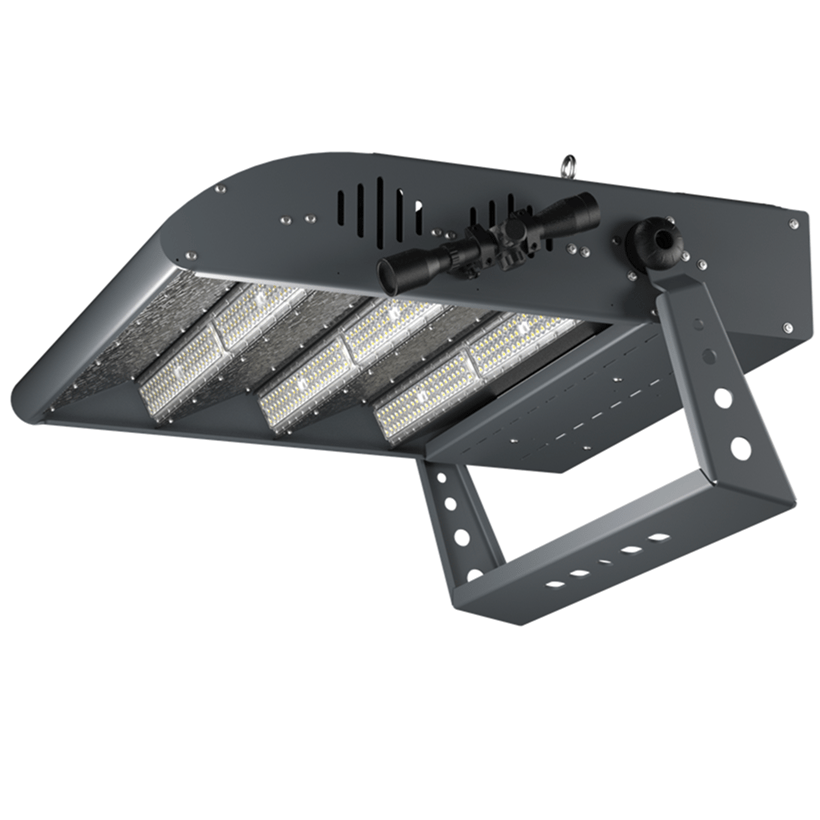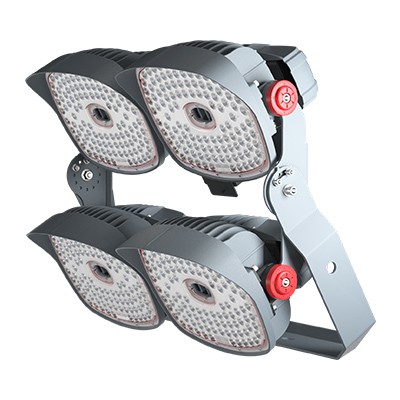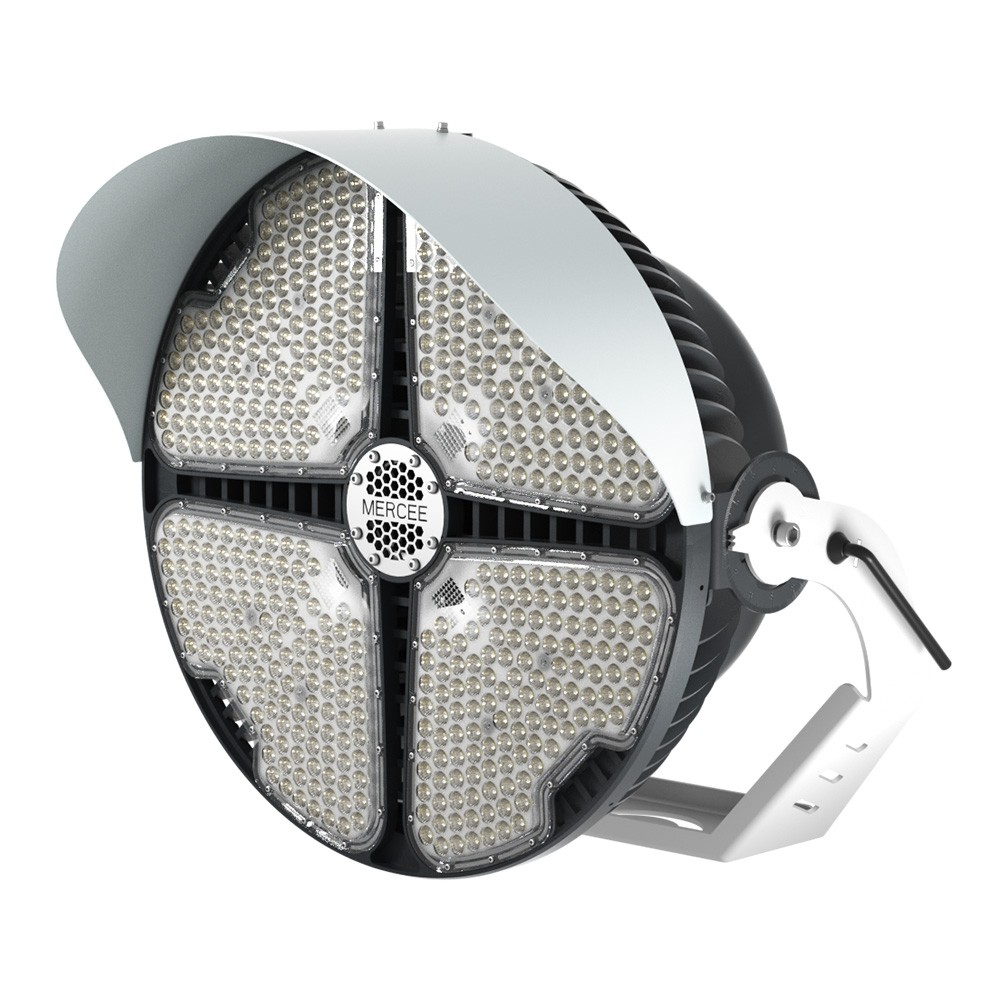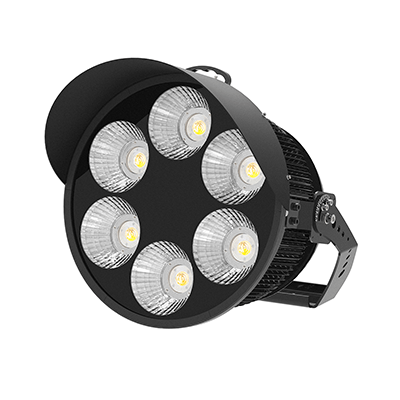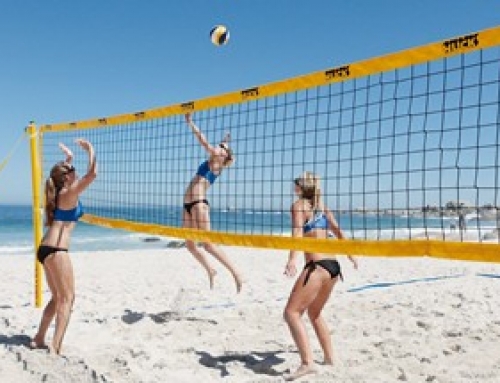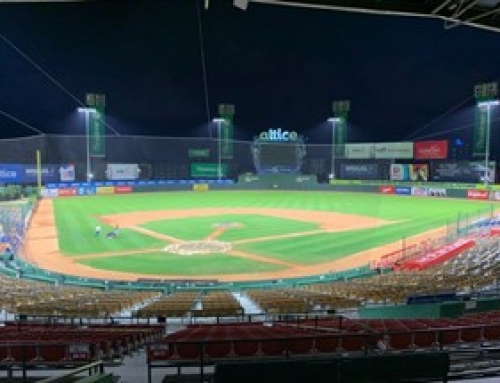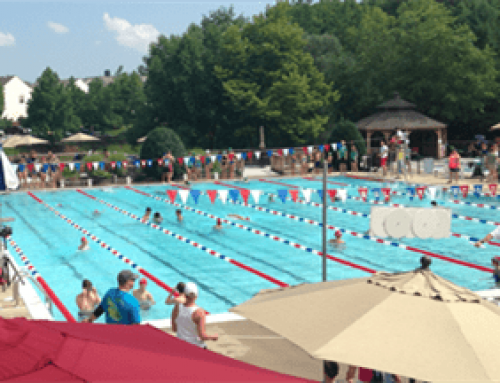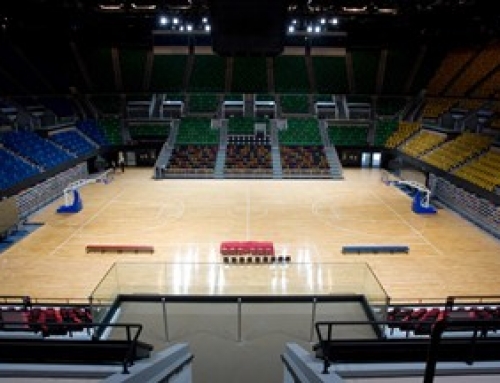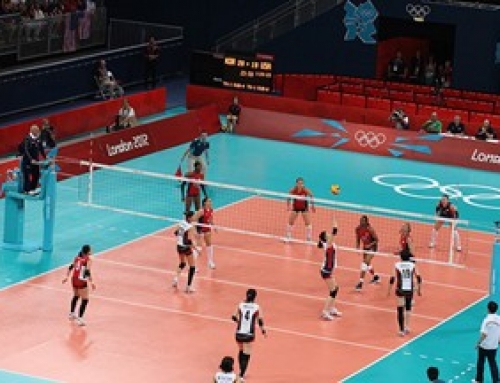Project Description
Guide to the Artificial Lighting of Hockey Pitches
There is an increasing desire to use an outdoor hockey facility over a long period of time each day. This will often entail the use of artificial lighting. At one level, this maximizes the value of an investment in a synthetic turf pitch because of the longer periods of use for evening training or local matches. At another level, it enables international competition matches to be held in the evening when spectators are more able to attend and, in some climates when it is cooler.
However, it is important that the sports lighting is of an appropriate type and quality for four fundamental reasons:
• to ensure the safety of players and others involved in the game
• to provide better viewing for spectators and television where applicable
• to ensure the effective use of money spent on capital and operating costs over time
• to be environmentally sensitive.
This Hockey Filed Lighting Guide provides information about the things to consider when installing or perhaps upgrading artificial lighting.
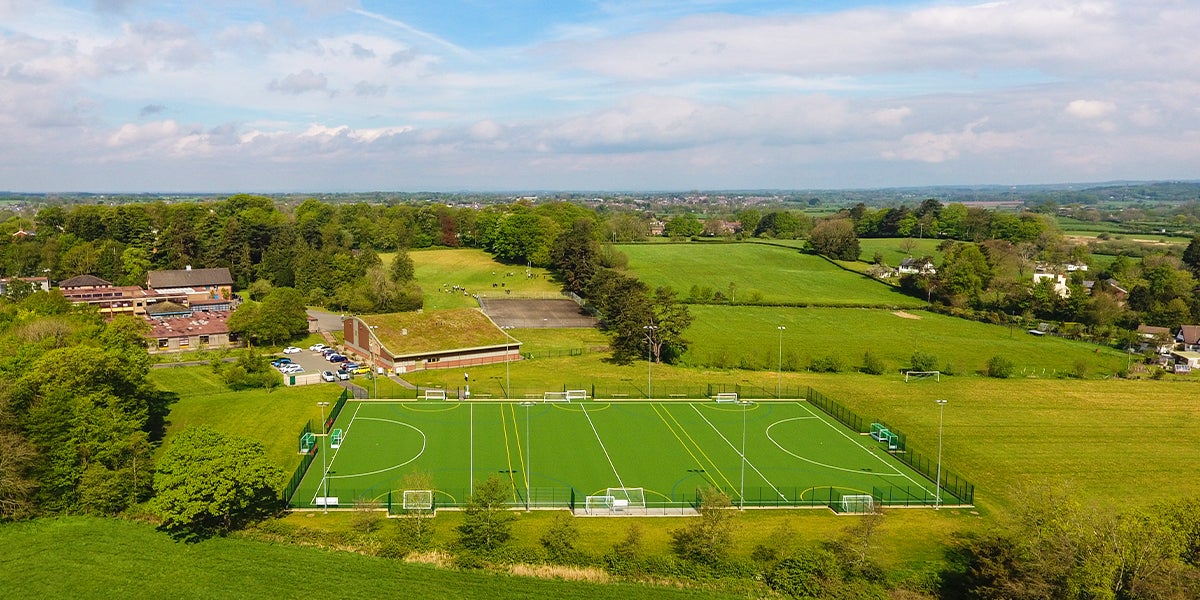
Unless played in good daylight, hockey like all other sports requires good lighting for it to be played safely and enjoyably. This is true whether the game is being played at the recreational level or at an international televised event.
As with all projects, the budget available is a key factor in determining the outcome. There is a growing awareness of the added value of good quality lighting for any sports venue. Both the contract price and life-cycle operating costs should be considered in determining the supplier for your project. Even though it requires investment, hockey field lighting represents only a modest proportion of the total cost of the installation and, as a rule, it is true to say that where the right
lighting has installed the users, players, spectators, and venue owners are never disappointed. However, if a poor, second-rate system is installed this almost always leads to complaints and eventually to a very costly change or upgrade.
The Hockey Pitch Lighting Guide is intended for anyone involved in the planning or maintenance of hockey venues from local recreational pitches through to play at the highest levels. It provides the information needed to work through the process to ensure a good result is achieved for players, spectators, television viewers, and the environment.
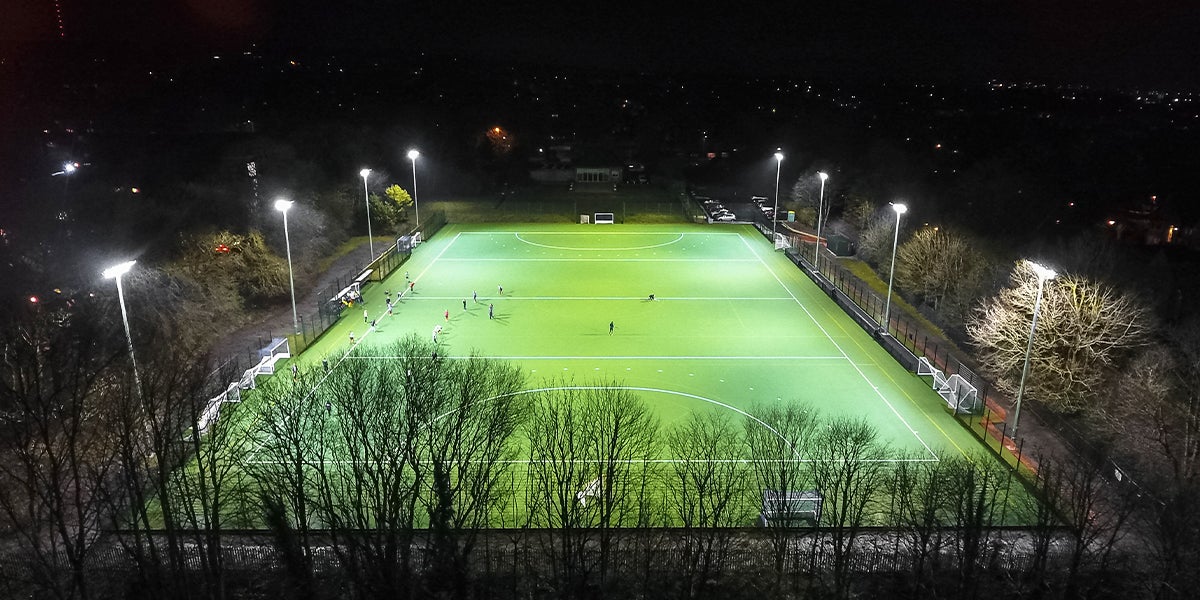
The Hockey Sports Lighting Design Process
As every project is unique, it is not possible to have an exact prescription, but in broad terms, the following process should be followed to avoid pitfalls:
• Determine the level of play and objectives at the venue.
For example, non-televised or televised?
• Initial lighting design by a professionally accredited sports
lighting engineer to help define difficulties, to raise questions,
and to enable the necessary budget to be assessed.
• Detailed lighting design with input from venue management. Careful consideration should be given to the integration of lighting with existing or designed structures to ensure that the aiming is according to the lighting design and that the commissioning and maintenance of luminaires are possible.
• After installation, aiming should be checked against the lighting design and measurements taken to ensure the results are in line with the requirements.
Televised or non-televised?
Determining how matches will be watched at a venue is essential as the two lighting design approaches are very different.
• For non-televised matches, the illuminance horizontally on the pitch is considered as the plane of reference for the pitch. This approach in practice will then provide sufficient illuminance for players to see each other and for the ball to be seen clearly.
• For televised events, there are a number of potential reference points. The first is the level of illuminance in the direction of a fixed camera. The second is the illuminance on a vertical plane and this is used where there are to be mobile cameras. The third is the horizontal illuminance level. The fourth is to calculate
the illuminance level in the stands in the direction of a certain camera to ensure there is sufficient light to get spectator images. And finally, an equally important criterion is the uniformity ratio or the rate of change in light levels across the pitch. All of these calculations are the realm of a professionally accredited lighting engineer.
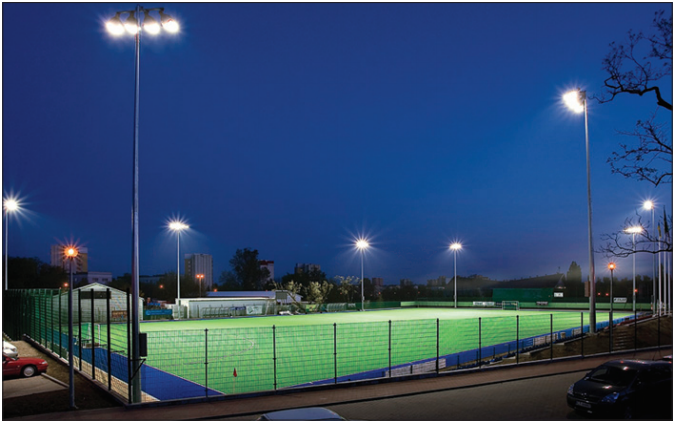
The Hockey Venues Lighting Recommendations
Below are the recommendations for indoor and outdoor hockey venues which include recommendations for:
• Non-competitive including physical education: Class III.
• Ball training as well as junior and low grade club competitions: Class II.
• High grade national club and international competition: Class I.
• Televised events divided into regional, national, and international levels of competition.
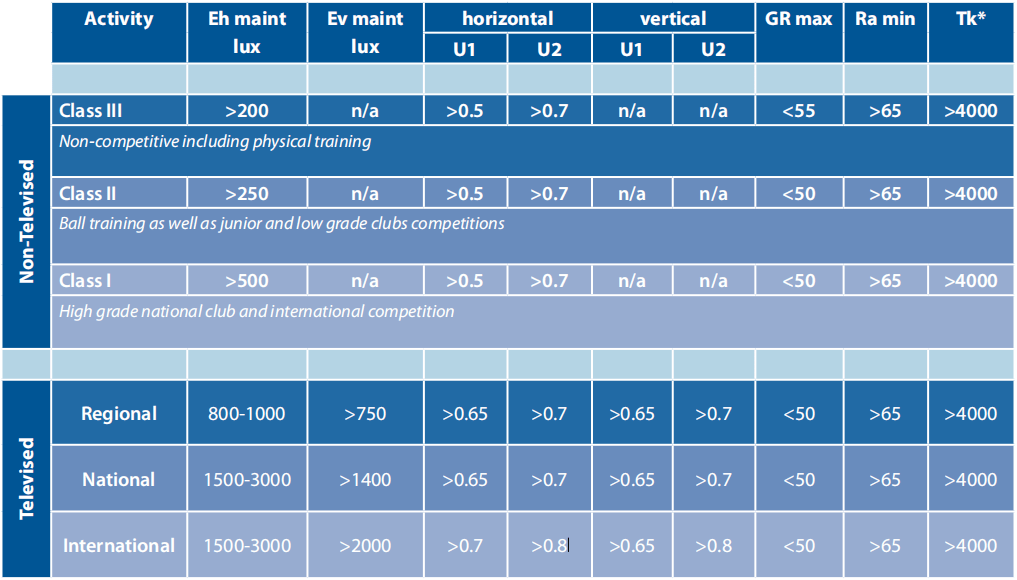
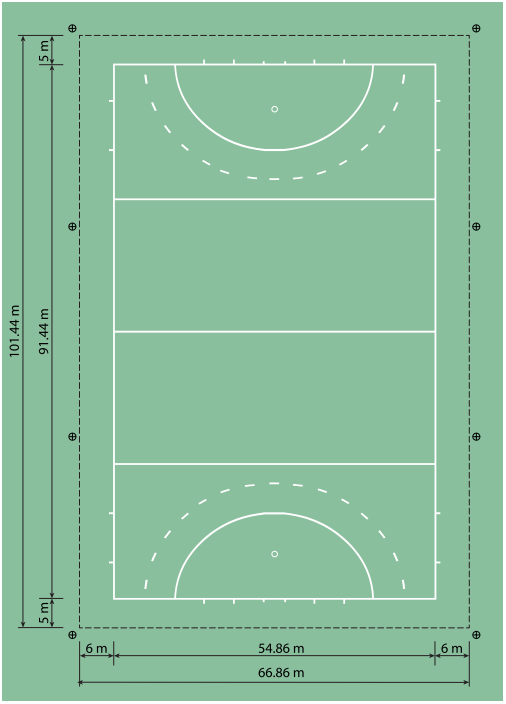
Hockey Pitch Light Mast Placement
Masts must always be situated outside the overrun area as shown below. We recommend a minimum of 5 m beyond the back lines and 6 m behind the side lines.
Hockey pitch side mast arrangement:
This method usually provides a more uniform lighting result and may be economically more feasible as pole height requirements are typically reduced. Four, six, or eight mast layouts are acceptable. A qualified lighting designer can determine the most advantageous arrangement based on the level of play and site conditions.
Hockey pitch corner mast arrangement:
A corner mast system can be utilized but care should be taken that masts are situated so that there is sufficient vertical illuminance as this can sometimes prove difficult in the central area of side-lines. Heavy X shadowing from players is a drawback to this design as well as a higher potential for glare. Positioning some lighting on the roof over spectator stands may help if of adequate height.
Light Control – Obtrusive light
This is wasted light that is directed up into the sky or beyond the boundary of a sports facility. Reference should be made to CIE 150 (issued by the International Commission on Illumination) or local regulations. A good quality hockey lighting installation will achieve the lighting requirements and at the same time not impose on surrounding residents or services. The lighting equipment supplier can assist in assessing this issue and provide drawings showing maximum lux at any points of concern on adjacent properties.
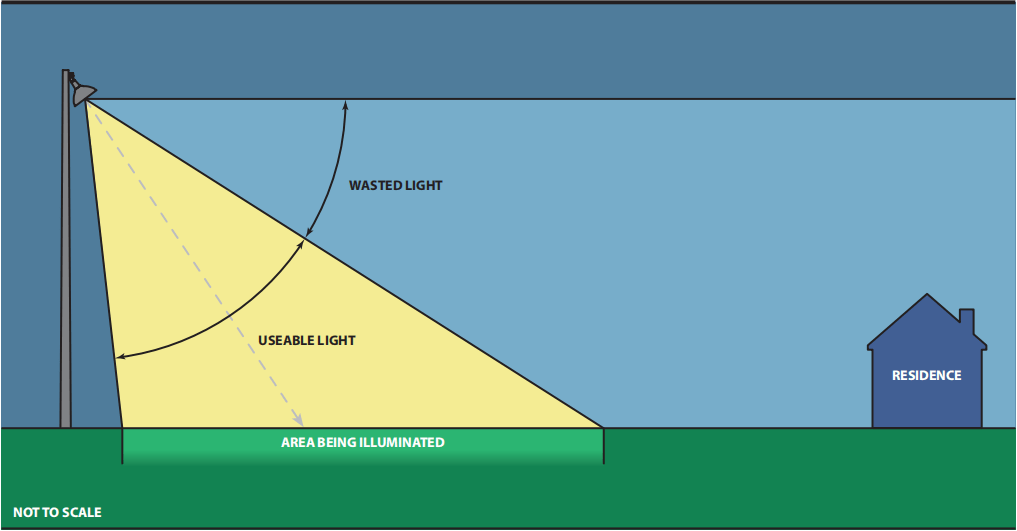
Why Choose HYH Lighting Floodlights?
- More than 16 years of experience in the development and production of sports lighting products
- All products are self-developed and patented designs, with No risk of infringement.
- Our products are made of high-quality raw materials and accessories
- Strict quality control ensures that the product is 100% safe during installation and working.
- Advanced optic technology and high efficiency LED systems to provide more energy savings.
- All products have passed global certifications, and the warranty service is 5 years at least.
- If there are after-sales problems, we promise to provide solutions to customers within a week.
- Professional and flexible team service can assist customers to win projects.

